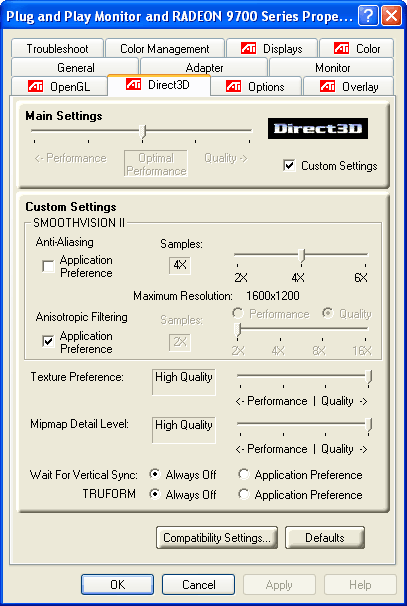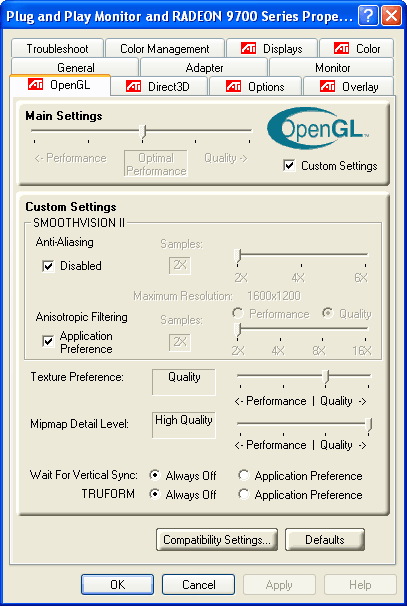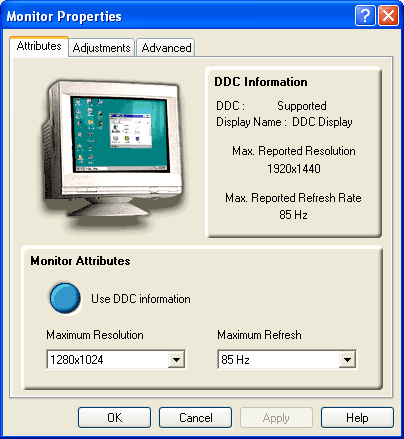Pixel-Churners: A round-up of Radeon 9700 PRO cards
What These Elite Candidates Have In Common
Drivers
On its website, ATi differentiates between original ATi cards (Built by ATi = BBA) and third-party boards (Powered by ATi = PBA). That said, you can still operate all the cards using the BBA Catalyst drivers. The driver allows you to make numerous 3D settings for Direct3D and OpenGL. You'll quickly be able to find your way around the different options in the settings menu. Right-clicking on any of the settings will bring up a small help window explaining the feature.
Settings menu for Direct3D options.
The only sour point was the difficulty in setting the refresh rate in the driver's display menu. When you change resolutions, the driver will automatically overwrite your settings for the maximum refresh rate. It remains a mystery to us why you have to first set the maximum refresh rate for a resolution in the ATi display menu, then change the resolution "manually" in order to set the refresh rate in the standard Windows monitor menu. And if you are running several monitors at once, you'll have go through the entire process again for each monitor. And you get to do it all over again if you want to change your resolution. ATi really ought to find a way to offer all these settings in one easy-to-use menu.
Settings menu for OpenGL options.
Also, the driver conspicuously lacks a refresh-rate fix so that you can set your refresh rate higher than 60 Hz in games under Windows 2000 and Windows XP (below SP1). This feature is supposed to be included in future drivers.
Setting the refresh rate is incredibly complicated (see text).
Get Tom's Hardware's best news and in-depth reviews, straight to your inbox.
Current page: What These Elite Candidates Have In Common
Prev Page Image Quality Next Page Multimedia Bundle Software

